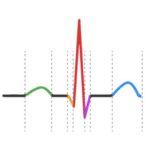The weather has shifted and a steady rainfall is covering the Los Angeles and Orange County areas. Live footage streams across the TV channels of rowdy surf peppered with images of brave, experienced surfers out for their morning adrenaline fix.
Immediately, the question is raised, “how dangerous is this?” and thoughts immediately tune into the size of the wave, the current and the skill of the surfer. But what of the dangers lingering, hidden within the water and so minute that they cannot be seen with the naked eye?
These “hidden” predators lie in wait to attack at every opportunity yet their prey often does not realize they are the victim until days later when symptoms hit. Yes, I am speaking of microbes, virus and bacteria living within the ocean waters, stirred to heightened activity during bad weather.
Research has proven that storms and active weather can actually increase a surfer’s (or anyone venturing into the ocean water within 72 hour of a recent storm) chances for infection from pathogens stirred up within the ocean near urban runoff and sewage water (basically every beach along the California coastline).
Chad Nelson, environmental director of the Surfrider Foundation has this to say about ocean exposure post storm activity:
A study cited EPA’s draft guidance document on water quality found that surfers and divers were at greater risk of illness from contaminated beach water than are swimmers or waders. Swimmers in sewage-polluted water could contract any illness that is spread by ingestion of fecal-contaminated water (AIDS and many other diseases are not carried by enteric pathogens. (Nelson)
Symptoms of infection from pathogens resulting from recent ocean exposure can include abdominal and GI tract discomforts (nausea, vomiting and diarrhea), sinus congestion, pinkeye, upper respiratory illness and headache. Seeking appropriate medical attention is always appropriate. Supportive instruction received in courses such as those offered by Orange County ACLS classes also provide basic skills to deal with any emergency encountered at the beach.
Education and knowledge about these environmental factors (and patience through a post-storm 72 hour waiting period) allows eager surfers the opportunity to enjoy their sport and with less risk from hidden pathogens. Think safety and be aware of what lies waiting in the surf!










